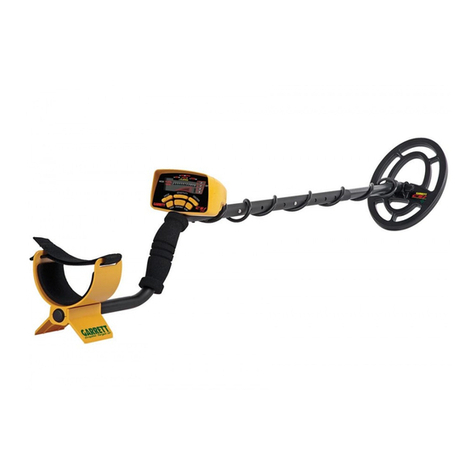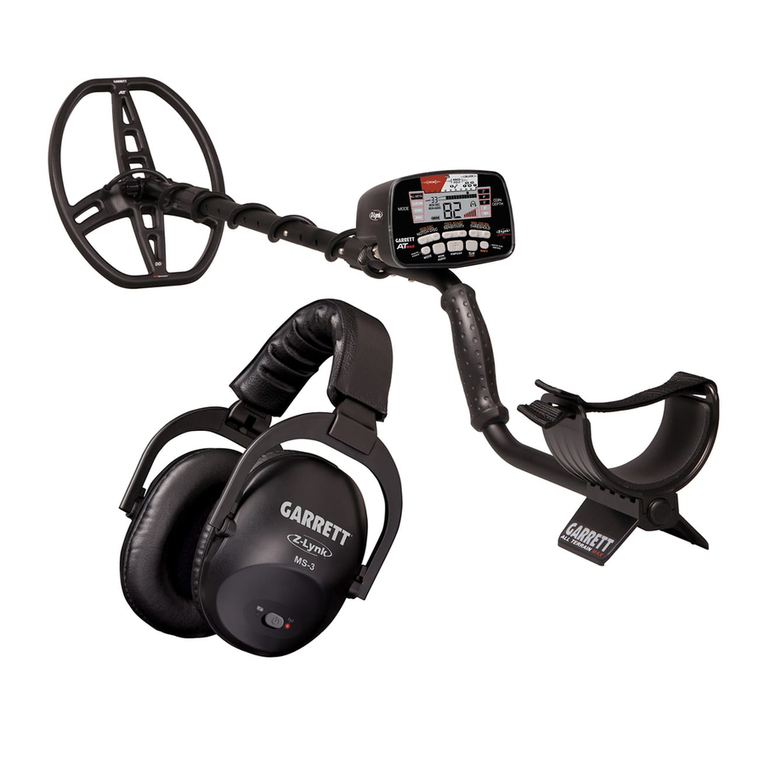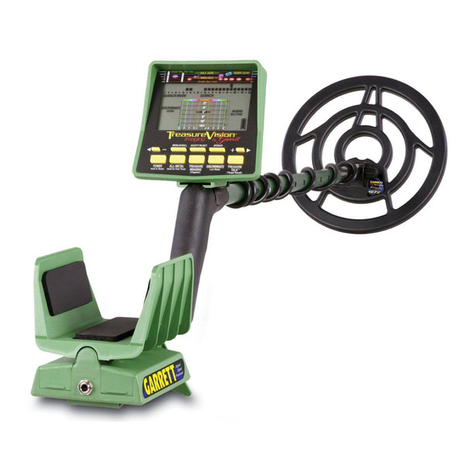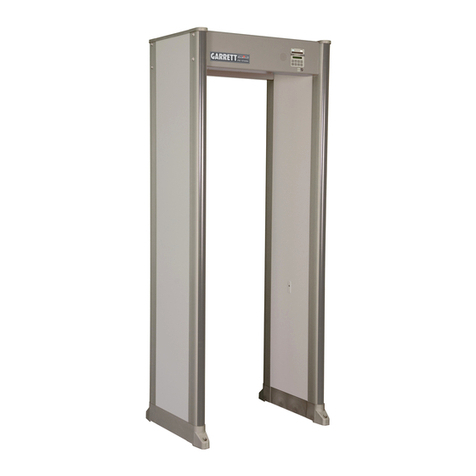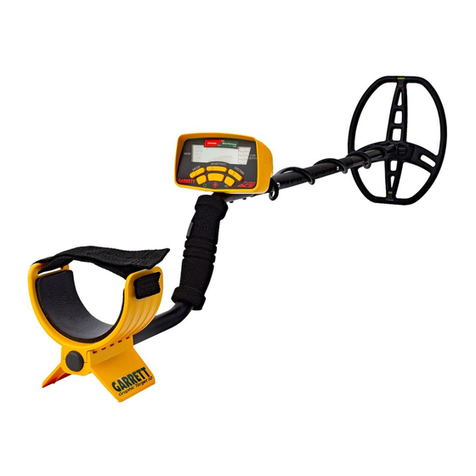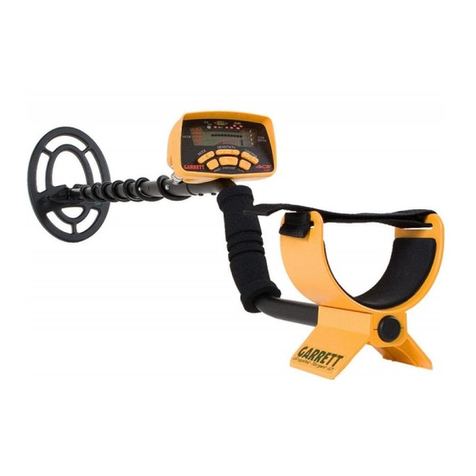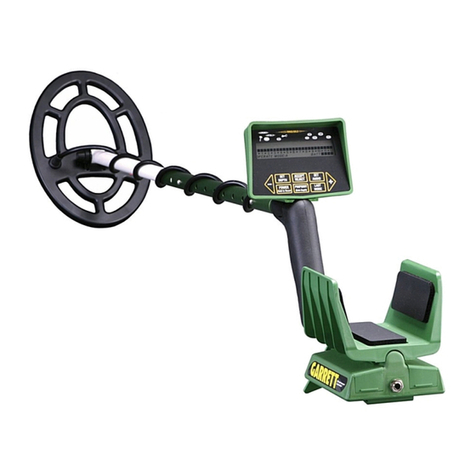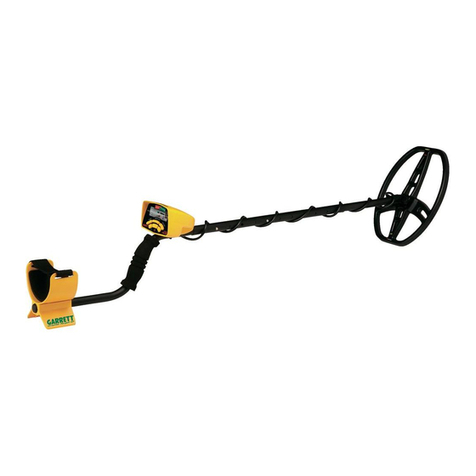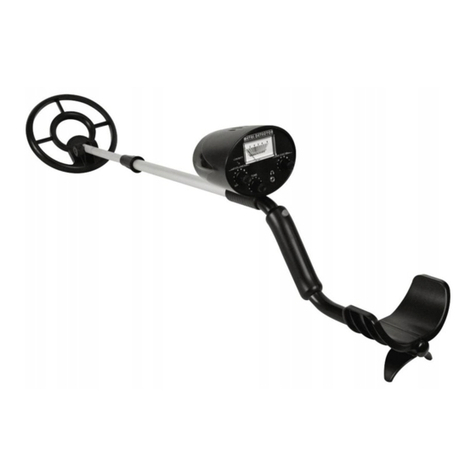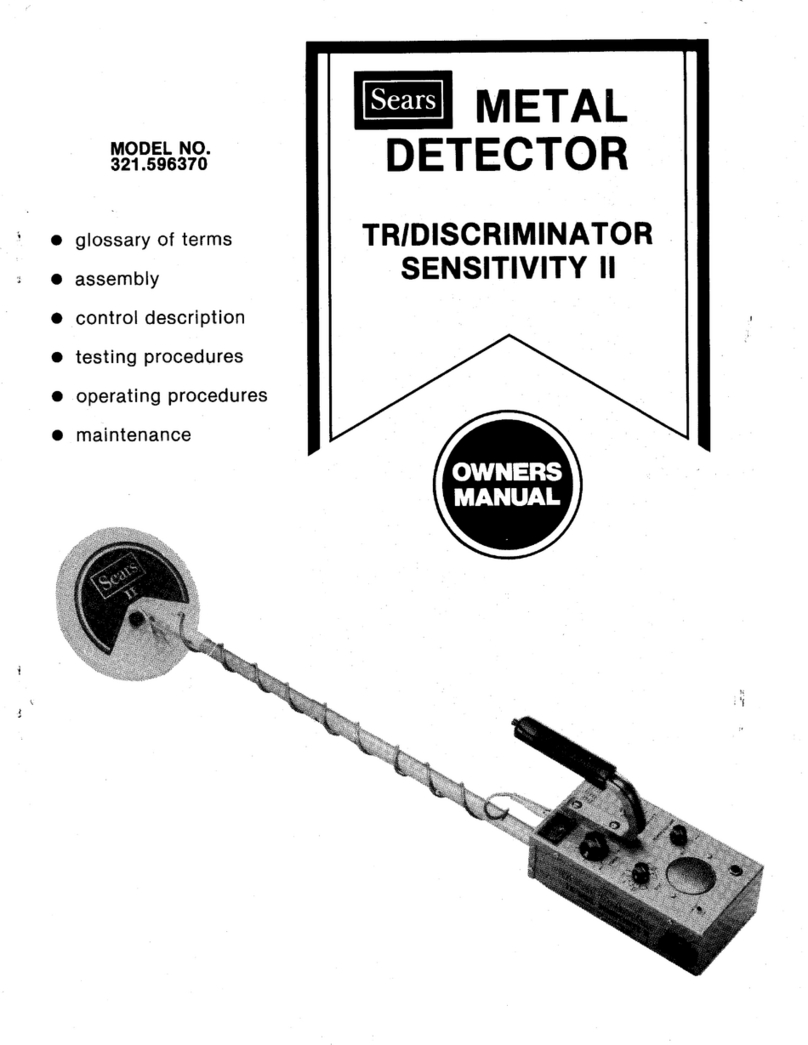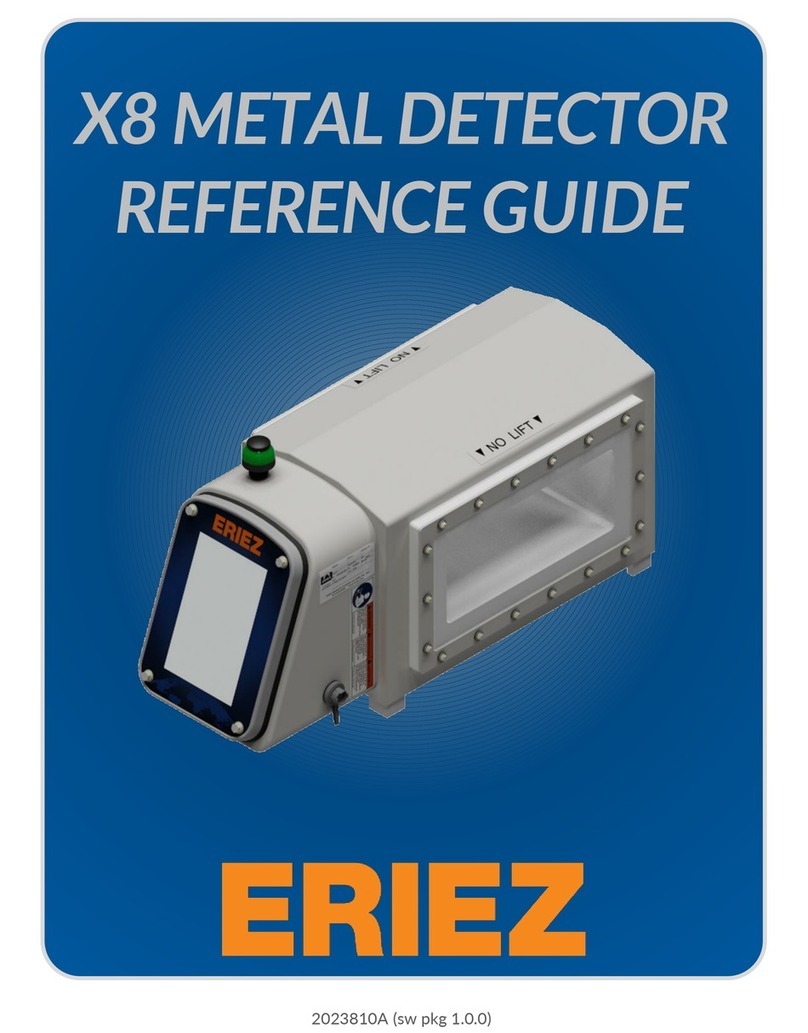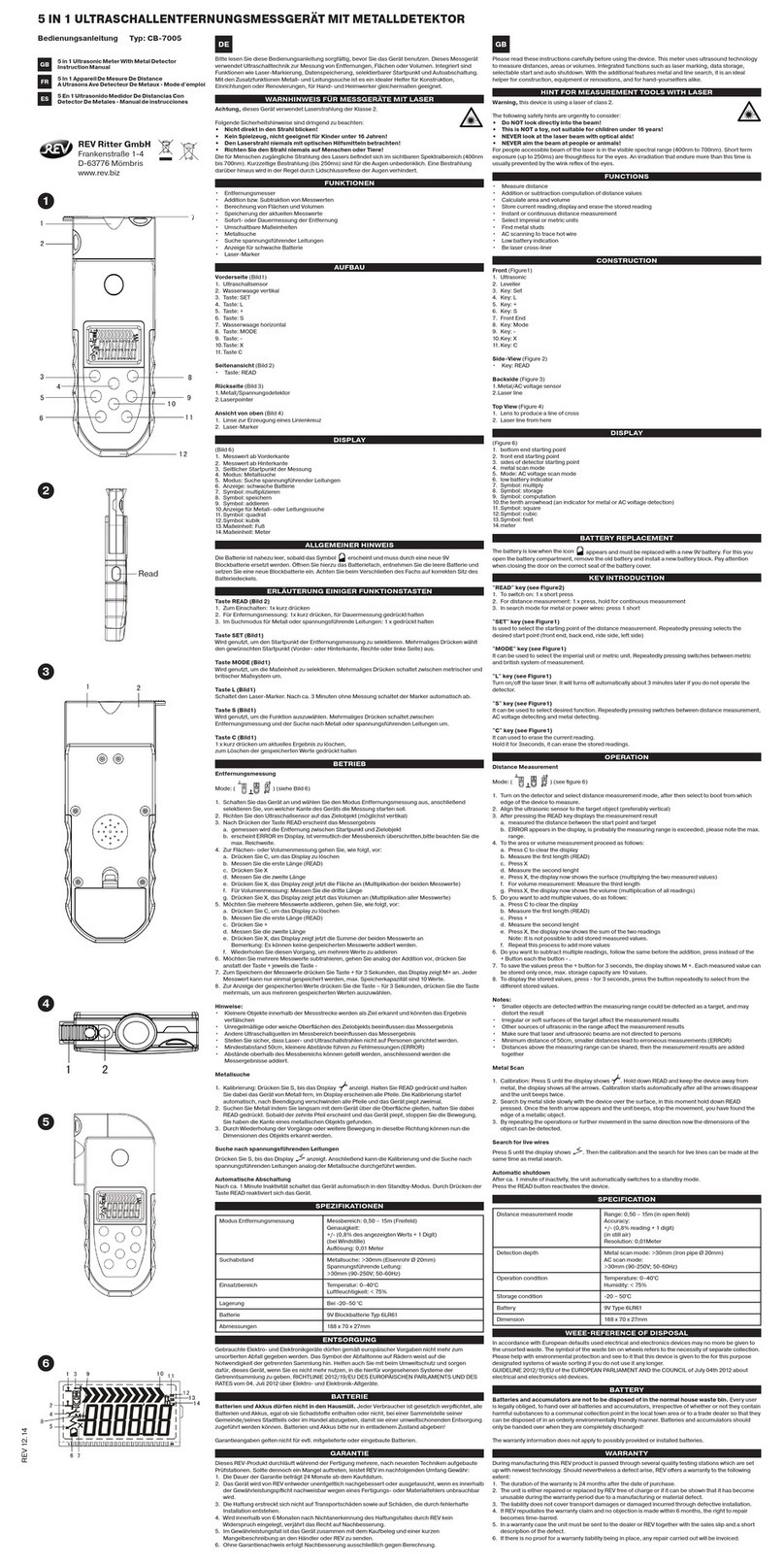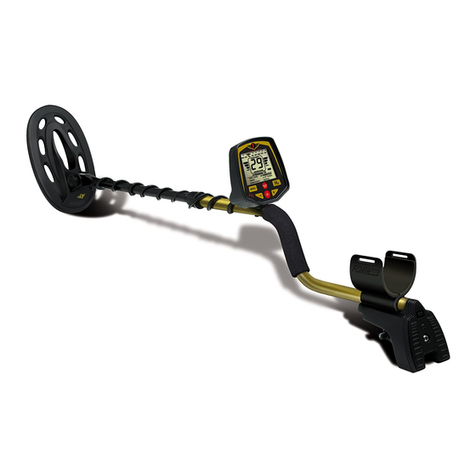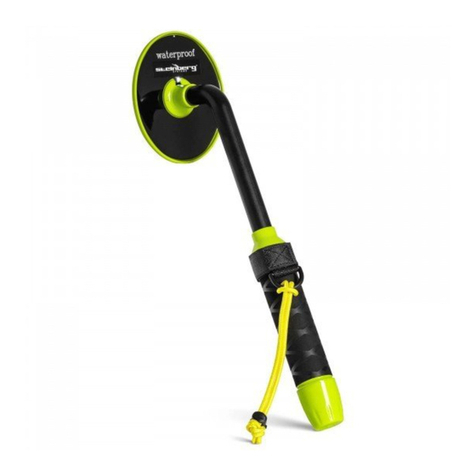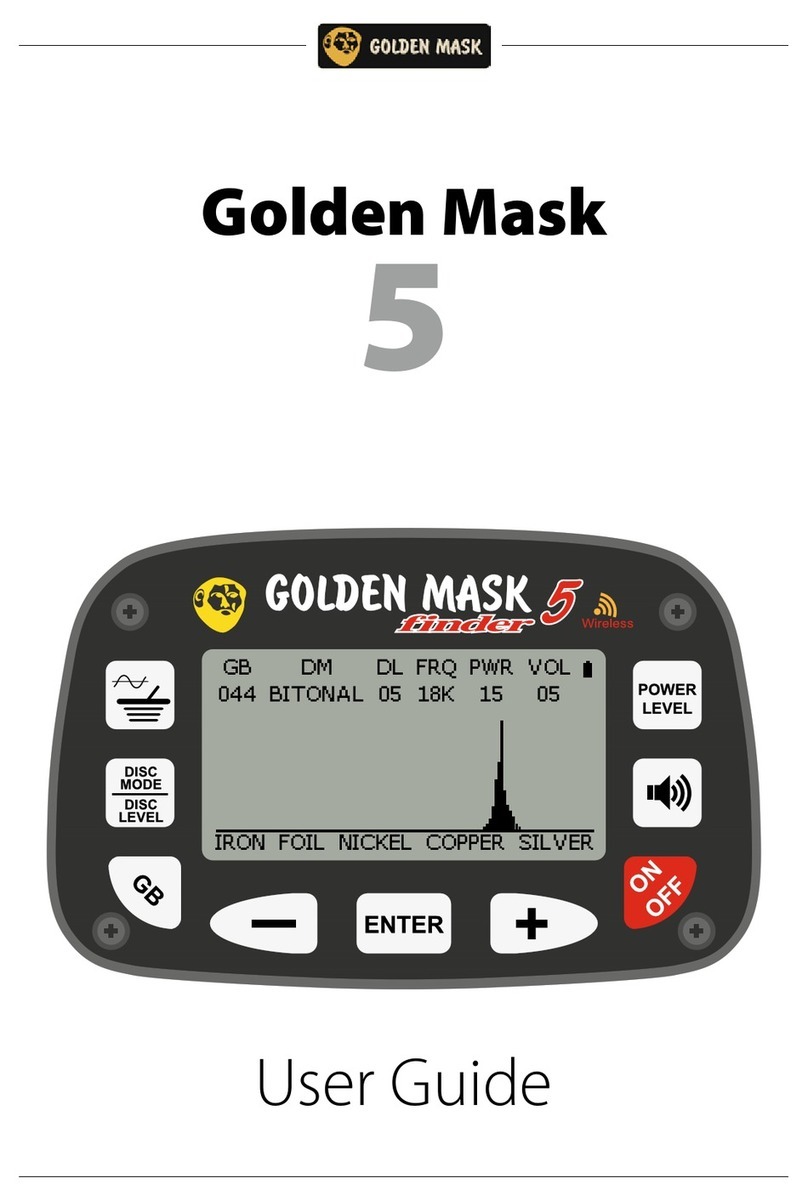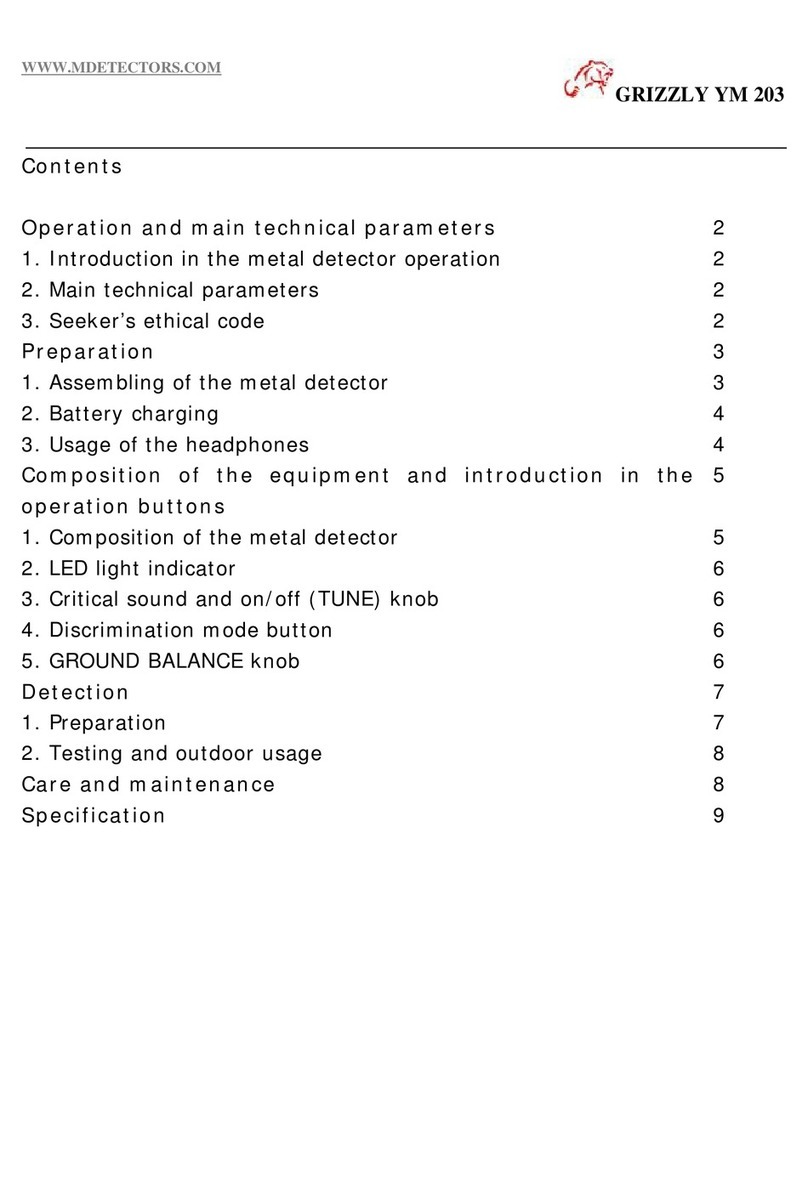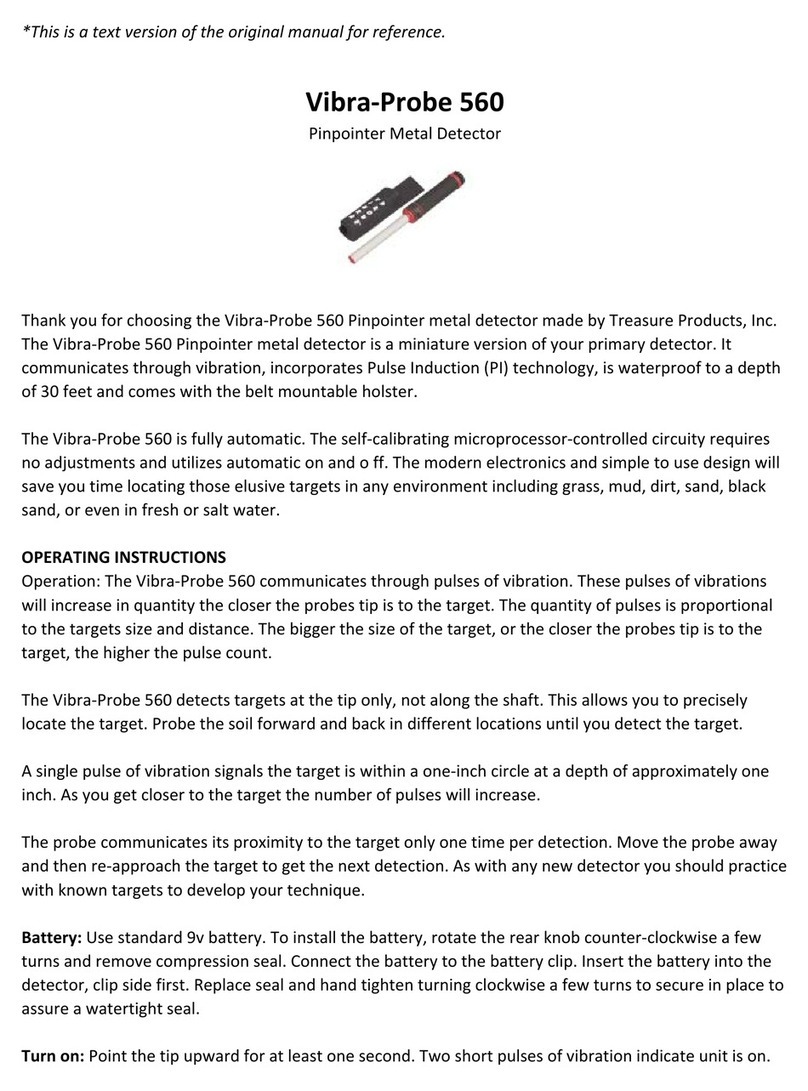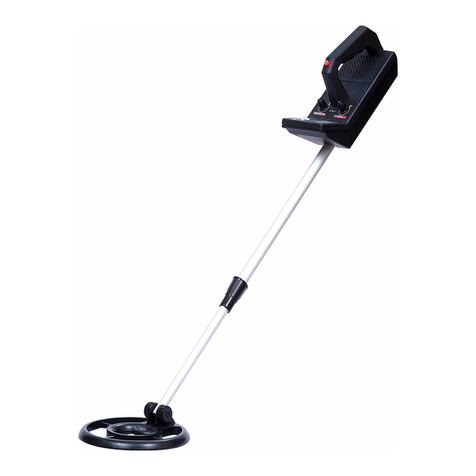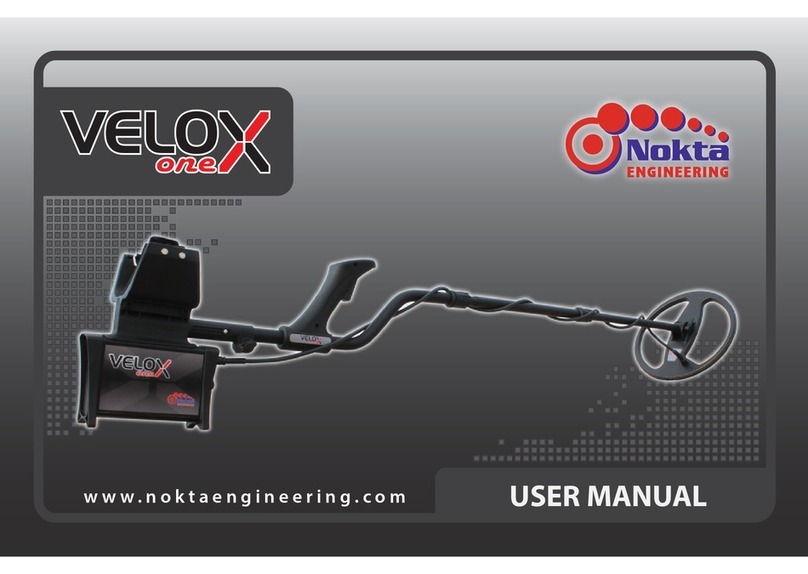CS 5000
User Manual
© 2009 GARRETT METAL DETECTORS 6 PN 1530100 REV H
1. CS 5000 GENERAL DESCRIPTION
The Garrett CS 5000 Walk-Through Metal Detector features microprocessor-controlled circuitry and
LCD presentation of all calibrating and operating information. It is capable of remote operation and
monitoring, when required, and is designed to be easily portable. The unit can be operated on battery
power alone through use of an optional battery pack, which further enhances its portability.
The detector is manufactured by Garrett Metal Detectors in Garland, Texas.
The CS 5000 uses microprocessors in both its detection and control circuitry. These integrated
circuits contain the necessary elements of a small digital computer and are preprogrammed to provide
discrimination capabilities that enable the CS 5000 to optimally detect weapons and other devices
made of metal. At the same time, the microprocessors permit the detector to be considerably more
sophisticated in its programming and provide greater flexibility in the selectivity of the metals it detects.
The detector also features excellent sensitivity, stability and noise rejection. All electronics are built into
an overhead panel of the unit to eliminate problems of logistics and reliability often associated with a
cable-connected console. The LCD display on the face of the detector's overhead panel reports
information concerning the unit’s calibration and operation. This includes program data, sensitivity
settings, operator settings and fault indication. A bright LED bar graph, easily visible from a distance,
reports detection levels and separate lights indicate ready and alarm conditions.
All regulation and control functions are “self-prompting” with necessary commands shown automati-
cally on the LCD. The Unit also reports a traffic count on its LCD. The system offers highly flexible
capabilities with a continuously variable range of programs including several that have been designed
for specific purposes. Programs are regulated by state-of-the-art touchpads and reported visually on
the LCD. Improved security of the unit’s detection settings comes from an improved system of access
codes. Two levels of codes eliminate the need for bothersome keys for locked doors or other protective
devices, while the CS 5000 circuitry provides precise accuracy of calibration. Access Code #1 is used
by supervisors for selecting programs and sensitivity with Access Code #2 designed for initial set up
and overall control. All settings are encoded by touchpads and remembered in an resettable memory.
Security of the unit’s calibration settings is further protected by a non-resettable sequence code that
allows supervisors to keep a log of all changes that are ever made as well as any unsuccessful attempts
to change them. In addition, a tamper indication reports any unauthorized attempts at access. A
complete and automatic self-diagnostic program is carried out by the CS 5000 each time the Operate
touchpad is pressed. In addition, the detector utilized self-testing circuitry that continuously monitors
the critical functions of the detector, reporting automatically the failure of any element that would affect
operation of the unit.



